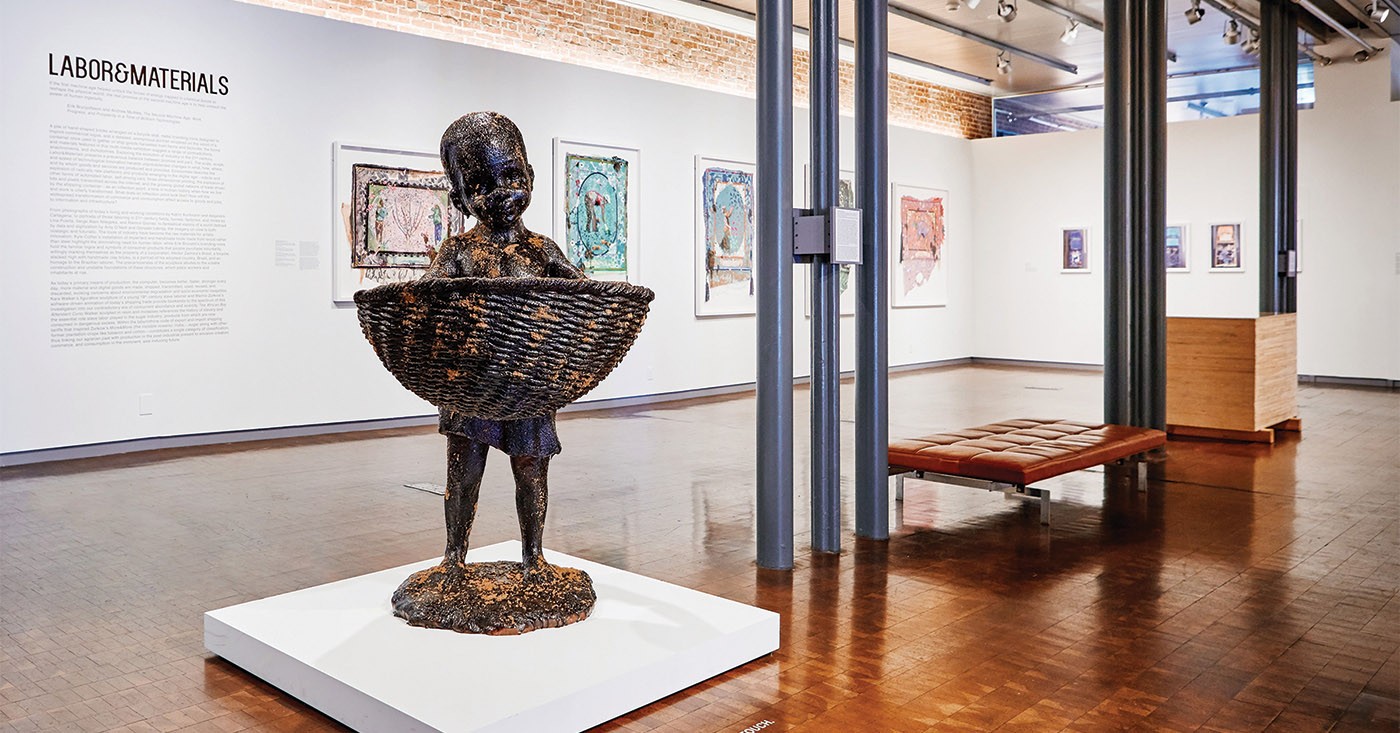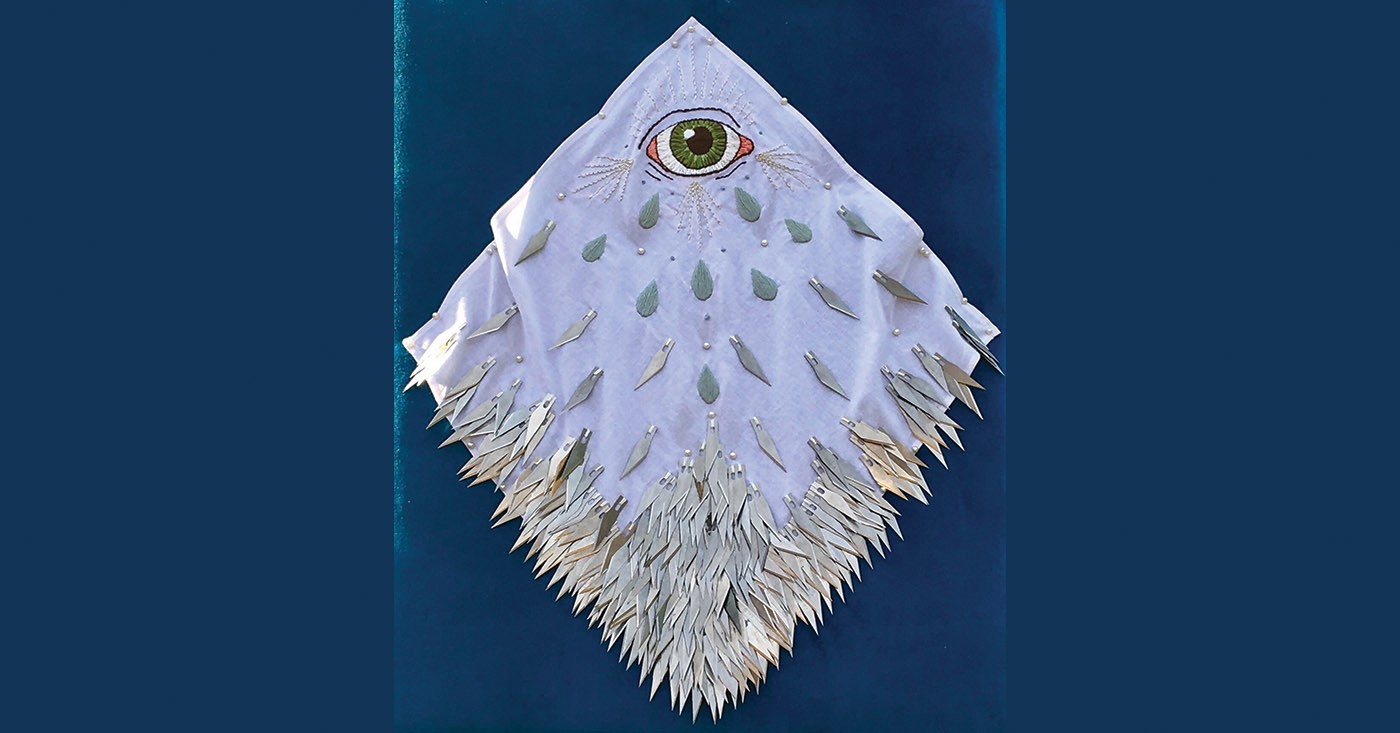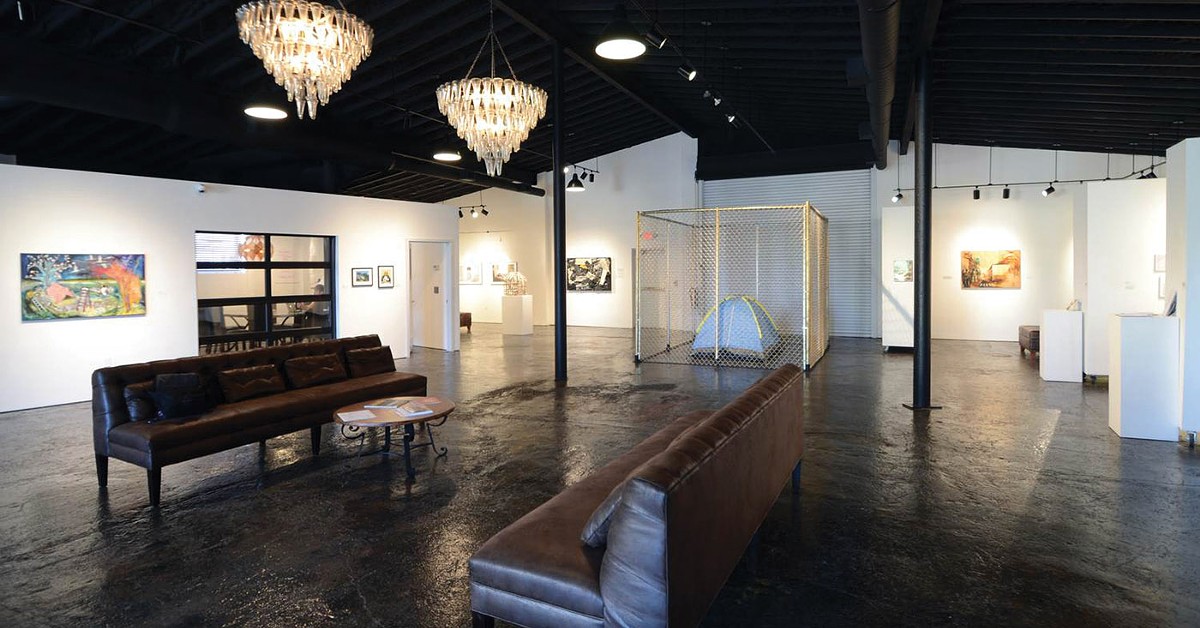This article is part of the 2019 Summer A&E Guide. For more, click here.
When the Speed Art Museum closed in 2012 for renovations, it took the opportunity to do a bit of market research. It turns out that people thought of the Speed as a “sleepy institution” and “buttoned-up.”
So, when it reopened in 2016, the Speed made sure to change that perception. Sure, it kept the “Old Masters Hall” highlighting the traditional art canon, but it also answered to increased calls for diversity in its exhibitions of modern — and even historical — art.
“There’s a paradigm shift where museums used to collect solely based on aesthetics and for the canon,” said Chief Curator Erika Holmquist-Wall. “That’s important, but museums also need to collect for a deeper sociocultural background.”
For her, that means finding artists to collect and exhibit who have been forgotten about or systematically excluded. For example, the museum is now showing “Echo,” a contemporary art installation by South African artist Brian Knop and “Sampler,” an embroidery piece by 19th century Kentuckian Mary Magdalene Lotspeich.
Like the Speed, museums and galleries have been radically reconsidering the norms for selecting art, to keep pace with societal change and awareness. But they also are establishing their own standards.
For example, activism has always been at the forefront for the nonprofit gallery 1619 Flux, but it is refocusing a bit to help pay bills and artists who want to make a living off of their work. The 21c Museum Hotel does not sell art, but the curator has had to figure out how to introduce visitors to the contemporary art world while still hosting thought-provoking pieces. Revelry Boutique Gallery has always had a commercial focus, but how does it balance a revenue-centered storefront with a fine art gallery in the back?
1619 Flux
Michael Kopp likes to compare 1619 Flux to the “Room Of Requirement” in Harry Potter, a magical room that only someone in need can find. Flux’s architecture doesn’t ooze a Hogwarts-esque flair, in fact its industrial-modern aesthetic is quite the opposite, but according to Kopp, “whatever you need in this room, you can find it or it is provided for you in some degree.”1619 Flux is set in a converted warehouse in Louisville’s West End, and its West of Ninth location is a core part of its mission. The gallery wants to engage its neighbors to not only explore their art and programming but also to exhibit their work.
The space has classic gallery white walls on which photographs and paintings of houses and buildings hang. But, perhaps, Flux’s current installation is what most immediately draws attention — a blue and yellow tent surrounded by a gold chain link fence. It’s all part of the gallery’s current exhibition: “Perspectives of Home.”
Kopp is the art director for 1619 Flux. He emerged from one of the offices slightly obscured from the gallery’s open layout. He has an MFA in social practice, focusing on community work, policy and critique of HIV organizations in Ohio. So, he is interested in how activism and art converge.
“We’re not just an art institution,” he said, then pausing and taking a moment to rephrase. “Actually, I wouldn’t call us that at all, we’re an organization that is working towards creatively transforming spaces in the community and this space is merely the art lens.”
Kopp helps curate three exhibitions per year, inviting established and less-established artists alike to participate — Flux showcases almost everything submitted through its open calls — but it is in a moment of transition. Future exhibitions won’t follow a specific theme, and the gallery will begin to prioritize sales, he said.
Flux’s shift underscores a challenge many galleries consider: balancing a financially sustainable base with art that makes a statement.
As a nonprofit, Flux’s sustainability as a gallery is important to maintain its mission. Simply put, sales help Flux support its artists financially and ensure that Flux can keep the space running. Kopp emphasized that it’s difficult to find a balance between showing art that stays true to its own vision while staying open.
“We do live in capitalist engine of culture,” Kopp said. But he thought that providing artists a platform to engage with patrons versus just hanging their art on the walls will let them ponder the activist-messaging behind some of the pieces while shifting to a more commercial base.
“In some aspects, I think [Flux] walks outside and parallel to Louisville’s art scene,” Kopp reflected. “We are a gallery, we show art, art is for sale here, but we’re not located in The East End, we’re not a commercial gallery space. We are a nonprofit with a mission of working with this specific community to transform areas in this community, and this space uses art as that creative model to make that happen.”
21c Museum Hotel
It’s almost impossible to venture into downtown Louisville and not run into one of the 21c public art installations: the bright-red plastic penguins poised on the roof, the hotel’s bejeweled limousine or the towering gold Statue of David on Main Street.Alice Gray-Stites oversees each exhibition across what soon will be nine locations around the country. She likes to see it all as a multi-venue, free-to-enter museum that is open 24/7.
Some visitors may love 21c for its irresistible photo op in front of the screen of falling numbers and letters, or perhaps the slightly awkward bathrooms with two-way mirrors. But 21c’s contemporary art goes beyond fun, and Stites won’t let you forget that.

Ask her about 21c’s collection and she can speak a mile a minute. Kara Walker’s molasses-resin sculpture? One of three permanent versions after the 10 other purely sugar-based models dramatically melted in their original exhibition, “Subtlety,” which explores the history of labor in relation to sugar upon the closure of the Domino Sugar Factory in Williamsburg, Brooklyn. She moved on to explain the nuanced historical and political messages. Or, in “A Man Sweeping (Times Square),” there is a contrast of anonymity in one of the most densely populated areas in the United States and an irony of “wanting to be seen, but not wanting to be found.” And while she can give micro-dissertations on almost every piece on display, she emphasized no single analysis exists for any piece.
“We like to say 21c is a place where people feel inspired, challenged and included,” she said, “and whoever you are, you will walk in and see some representation of yourself and your culture as well as discovering new ideas.”
21c’s collection comes from all over the world. Stites travels to art fairs and galleries to find impactful contemporary pieces. She is looking for “provocative” art featuring global perspectives, even if the ideas the artwork provokes can at first feel uncomfortable.
“We hope you will feel comfortable with being a little uncomfortable,” she said. To her, that sense of discomfort is a launching point for personal growth and mutual understanding. “... One of the most important things art can do is to nurture empathy and that’s in short supply these days.”
Revelry Boutique Gallery
Mo McKnight, owner of Revelry Boutique Gallery, said her business is primarily a commercial art space. The NuLu gift store and gallery sells art, including prints celebrating Louisville neighborhoods, Kentucky-themed T-shirts and handmade jewelry, all by local artists.“I’m not going to sit here and say that all of the art we have here has some sociopolitical meaning,” she said. “I’m here to sell art and have artists make a living off of their art.”
And last year, she said, she wrote over $350,000 worth of checks to artists.
A graduate of UofL with a degree in art, McKnight put her photography, oil painting and charcoal passions to the side to manage Revelry. She wanted a space for up-and-coming artists in Louisville, beyond the coffee shops and bars she was relegated to show her work in fresh out of art school.
McKnight said about 80% of the artists she works with approached her at first, and the rest she may have found on Instagram or through mutual connections. Most start out producing pieces for the store, and McKnight might approach them if she thinks their art could fit well in an exhibition. She made a point to clarify that not all Revelry artists are so-called fine artists, nor should they be. She considers the handmade jewelry pieces, candles and fiber apparel all valid forms of art.

She believes that craft artistry might engage more people with Louisville’s art scene. “As an art major and art history minor, I don’t always get art,” she said. “I think there’s a lot of people who don’t get art, but I get when something is beautiful, and I get when I connect with a piece.”
That doesn’t mean McKnight eschews fine art. She was particularly proud that every month, for each of the nine years Revelry has been in business, it has put on a gallery show.
Revelry sells bumper stickers and home decor in the front, but it also explores more controversial topics. In the current exhibition “ALT,” “Handkerchief: How Do I Turn My Tears into Blades?” Monica Stewart contemplates the separation of families at the border. In “Wage Gap,” Liz Richter reflects on her experience as woman muralist in Louisville receiving unequal compensation.
“Our arts scene is thriving,” McKnight said. “Keeping the talent here is my goal.”
Speed Art Museum
The Speed Art Museum is home to “Portrait of a Forty-Year-Old Woman” by Rembrandt and “The Child” by Mary Cassatt, but it also exhibiting “Wallpaper with Blue Floor Interior,” a screenprint by pop artist Roy Lichtenstein and “The Eyes of Gutete Emerita,” a photograph by Chilean artist Alfredo Jaar.For Holmquist-Wall, it’s all about balance.
When the “Picasso to Pollock” exhibition lured in visitors, the Speed also had an exhibition on Thomas Chambers, a relatively unknown folk artist. Even in the Speed’s layout, visitors are taken on a journey to explore beyond the canon. Pixelated flower still lifes by contemporary artist Tiffany Calvert introduce the Dutch Wing. Along the row of 19th century Greco-Roman inspired busts is a ‘90s-era light blue glass/copper sculpture.
Holmquist-Wall said the museum has been fortunate with the timing of rotating exhibits. The women impressionist showcase coincided with the #MeToo movement, and Ebony G. Patterson’s current exhibition explores themes of violence against African American men at a time of heightened awareness of this issue. Speed Communications Director Steven Bowling said there is more at play than luck.
“We have some smart curators,” he said. “It’s a matter of just keeping your antenna up.”
To do that, Holmquist-Wall keeps good relationships with art dealers and collectors’ houses to make sure they know what she is looking for, she keeps tabs on their current inventories and stays updated on what has hit the market.
Currently, she’s looking for historical works by female artists, but collecting can be competitive. Even if there’s an art piece that she thinks could be a perfect addition to the Speed – getting it can be another story as her colleagues from other museums are also eyeing works from female artists.
“The contemporary curator has it easy,” Holmquist-Wall joked, thinking about the limited readily available collections of diverse, artists in her expertise of 1300 to 1945. •







